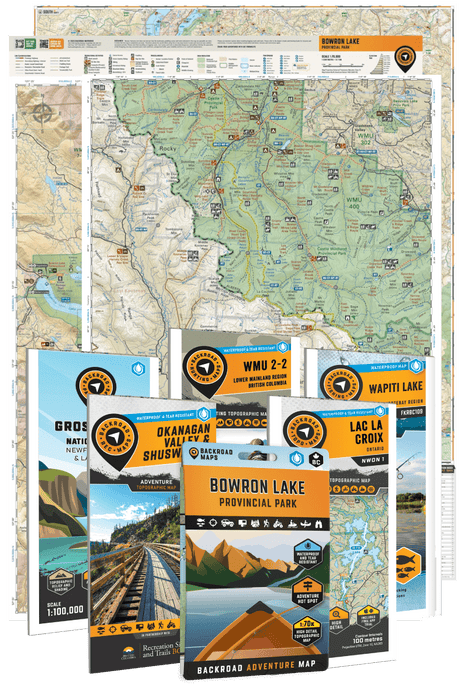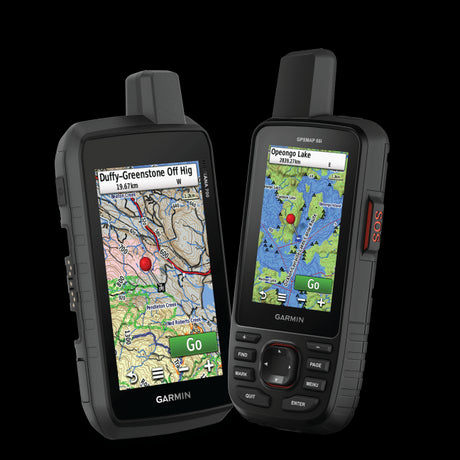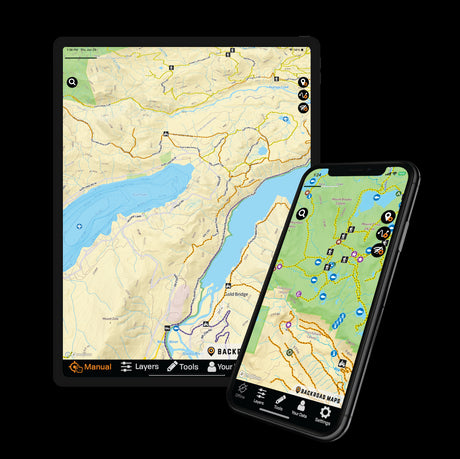Here at Backroad Mapbooks we live to explore, and we also have an undying love of Halloween. So, with our favourite holiday approaching fast, we’ve collected a list of our favourite places to explore hauntings in the prairies. Canada’s prairie provinces are full of creepy places to explore – haunted hotels, abandoned psych wards and ghost trains are par for the course. Not to mention an authentic backroad haunting you’ll never forget. Here are our top picks for exploring the paranormal in the prairies:
Fort Garry Hotel, Winnipeg, Manitoba
The Fort Garry Hotel is a stately building in downtown Winnipeg and a frequent topic of discussion for paranormal investigators. Built in 1913 by the Grand Trunk Railroad, the hotel was the tallest building in Winnipeg and hosted many famous guests, including Harry Belafonte, Laurence Olivier, Louis Armstrong and King George VI and Queen Elizabeth.
Of particular interest for ghost hunters is Room 202. According to legend, a woman hanged herself in the closet of this room after learning of her husband’s death in a car accident.

Photo by Lewis Foote / http://www.gov.mb.ca/chc/archives/
There are many accounts of strange happenings in Room 202 – staff have reported seeing blood dripping down the walls, and the apparition of a woman is often seen in this room, as well as in other parts of the hotel.
In one particularly notable incident, Ontario Liberal MP Brenda Chamberlain was woken repeatedly during her stay in Room 202. She described the sensation of someone getting into bed next to her, then turning on the lights to find that no one was there.
Burton Cummings Theatre, Winnipeg, Manitoba

The Burton Cummings Theatre was constructed in 1906 and was originally known as the Walker Theatre. The theatre was named after Carlos Powers Walker, who already owned several theaters in South Dakota and wanted to expand to the northern terminus of the Northern Pacific Railway, which at the time was in Winnipeg.
Back in 1914, celebrated English acting couple Mabel Hackney and Laurence Irving were completing a North American tour, with their final stop at the Walker Theatre in Winnipeg. Following a sensational performance, Irving bade farewell to the audience and vowed to return with new stage work.
The couple traveled to Quebec City, where they boarded the RMS Empress of Ireland bound for Liverpool. On her way out of the St. Lawrence River, the Empress collided with a Norwegian collier. The Empress sunk in just 14 minutes, resulting in the deaths of 1,012 of her 1,477 passengers, among them Hackney and Irving. It was the worst peacetime maritime disaster in Canadian history.
According to employees of the Burton Cummings Theatre, the couple kept their promise to return. Unexplained footsteps, lights being switched on and off, shadows moving in an empty room and the feeling of being watched are common occurrences for workers. The ghostly apparition of a woman has been seen, as well.
In order to allow the ghostly couple to perform, a single light is left on each night, illuminating the stage for the departed actors.
Saskatchewan Hospital, North Battleford, Saskatchewan

Called the Saskatchewan Hospital, this mental hospital opened in the early 1900s. This was Saskatchewan’s first psychiatric hospital and was touted as “one of the most modern on the American Continent.” Totally self sufficient, all staff and patients lived and died on the hospital grounds.
Built to house 800 patients, the hospital struggled to care for the thousands who were sent here. By 1919 a decision was made to open a second institution in Weyburn, Saskatchewan ( see Souris Valley Mental Health Hospital below) and by 1929, with approximately 1,000 patients at each location, the overcrowding led to deplorable conditions for the patients. Patients’ health and hygiene deteriorated and they were forced to dress in canvas robes and sleep in cramped quarters, sharing beds or sleeping on the floor.
All of the hospital’s buildings are connected by underground tunnels, and there have been many stories of people travelling these tunnels who simply vanish.
A nearby cemetery contains the graves of over 1,000 patients who died at the facility. The graves are marked with rusting steel crosses, inscribed with only a number. At night, it is said that some of these graves give off a glowing light.
The hospital still operates, though conditions have greatly improved and the archaic psychiatric treatments are no longer practiced.
St. Louis Ghost Train, St. Louis, Saskatchewan
St. Louis is a small village with a population of just 450, but it is home to one of Saskatchewan’s most famous ghost stories. According to legend, a set of train tracks were covered over after an accident on the tracks killed an entire family. The engineer in charge of the train was so riddled with guilt that he committed suicide, some say at the exact spot where the light can be seen.
There have been hundreds of eyewitness accounts of the lights, which sometimes even appear in broad daylight. A large white light is said to be the light of the ghost train itself, while a smaller red light is the engineer searching for survivors of the accident.
The St. Louis Ghost Train is a prairie paranormal phenomenon that goes back generations, and though sceptics have claimed that the lights are just headlights from a nearby highway, eyewitness accounts predate the widespread use of automobiles.
Whatever the explanation for the lights might be, they remain a draw for locals and visitors alike, having been featured on a Canada Post stamp as well as on major network TV. For many St. Louis residents, the lights are better left unexplained.
La Barriere Park, Ritchot, Manitoba

Photo by Cold Spot Paranormal Research / coldspot.org
Located south of Winnipeg, this scenic nature park is a great place to get some peace and quiet and get lost in the forest. It is also the site of repeated paranormal phenomena – visitors have described hearing the laughter of children, the sound of two girls talking and feeling unexplained gusts of wind, as if someone is running past them.
While the origins of these phenomena are unknown, it’s safe to say that there is something amiss in La Barriere Park. It’s also a beautiful place to visit, with over 6 km (4 mi) of nature trails that explore the area around the La Salle River. Even if you don’t experience any paranormal activity in La Barriere Park, the changing fall colours in the untouched riverside forest are reason enough to check it out.
Souris Valley Mental Health Hospital, Weyburn, Saskatchewan

Photo by Soo Line Historical Museum / www.virtualmuseum.ca
Founded in 1921, the Souris Valley Mental Health Hospital was Saskatchewan’s second psychiatric hospital, built to house patients from the overcrowded North Battleford Psychiatric Hospital. This hospital was seen, at the time, as a model for a progressive approach to mental health treatments. In retrospect, the methods employed by the hospital were highly questionable – insulin shock therapy, electroshock and lobotomy.
One of the staff’s favourite methods for curing mental illness was “The Water Cure,” where a patient would be immersed naked in freezing cold water, then taken to a tub scalding hot water after their body temperature had sufficiently lowered. This was meant to shock and “reset” the patients. Even more gruesome versions of this method were used on female patients. Not surprisingly, this torture did little to help the patients recover and they never got “better.”
In the 1930s an investigation into patient care was performed, revealing the practices as inhumane, but the institution remained open anyway.
Souris Valley was even the location of extensive LSD experimentation, representing the forefront of research into the drug’s possible uses in treating mental illness. In the 1950s, staff were dosed with LSD in order to temporarily experience the effects of schizophrenia and better empathize with their patients.
Whatever went on at the asylum, it was enough for some energies or spirits to linger long after the doors were closed. There are reports of hearing voices whispering from the thick trees leading up to the hospital, disembodied footsteps echoing through the facility’s halls and the sight of a ghostly apparition pacing the floors of the fourth floor, which was coincedently sealed off. The hospital was torn down in 2009 but its mysteries remain unanswered.
Saskatchewan’s Strange Cattle Mutilations
Similar accounts of cattle & livestock mutilations were largely unknown outside cattle raising communities until 1967 when Lady, a three-year-old horse was found near Alamosa Colorado with her head and neck skinned and defleshed with the body showing precise surgical cuts. Lady’s story was published and picked up by the wider press and distributed nationwide sparking speculation that extraterrestrial beings and UFOs were associated with the mutilations.
On more than one occasion, farmers in rural Saskatchewan communities have discovered dead cows showing strange signs of mutilation. Cattle having certain body parts removed, again with precise surgical skill, showing no signs of attack by a predatory animal. And not only that, but the mutilated cattle were avoided by large scavengers such as coyotes, wolves, foxes and bobcats for several days following death and domesticated animals were also reported to be very aggitated and fearful of the carcases.
Widely documented cases of cattle mutilation in Saskatchewan occurred north of Saskatoon in 2009 and in Stockholm in 2008. In the 2008 incident, no blood was found around the wounds, suggesting the use of some sort of electric cautery tool. No signs of struggle, footprints or tire tracks were found near the animal.
Cattle mutilation is a worldwide phenomenon. Wounds are usually bloodless and the same body parts, including eyes and tongues, are removed in many instances. Theories explaining this phenomenon range from the work of a cult, to extraterrestrials, to military experiments. In the 1970s, reports of cattle mutilation became so widespread that the FBI was brought in to investigate. They were not able to draw any significant conclusions.
Warning - click here for images of disturbing cattle mutilation photos.
You can find your way to these creepy locations and more with the help of our Backroad Mapbooks and Backroad GPS Maps! From exploring hauntings in the prairies to finding the perfect hiking trail or campsite, BRMB’s got you covered!
Join the BRMB community and share your frontcountry or backcountry Halloween photos. Simply post your photo on facebook or instagram and tag it with #brmblife for a chance to win great BRMB swag!







